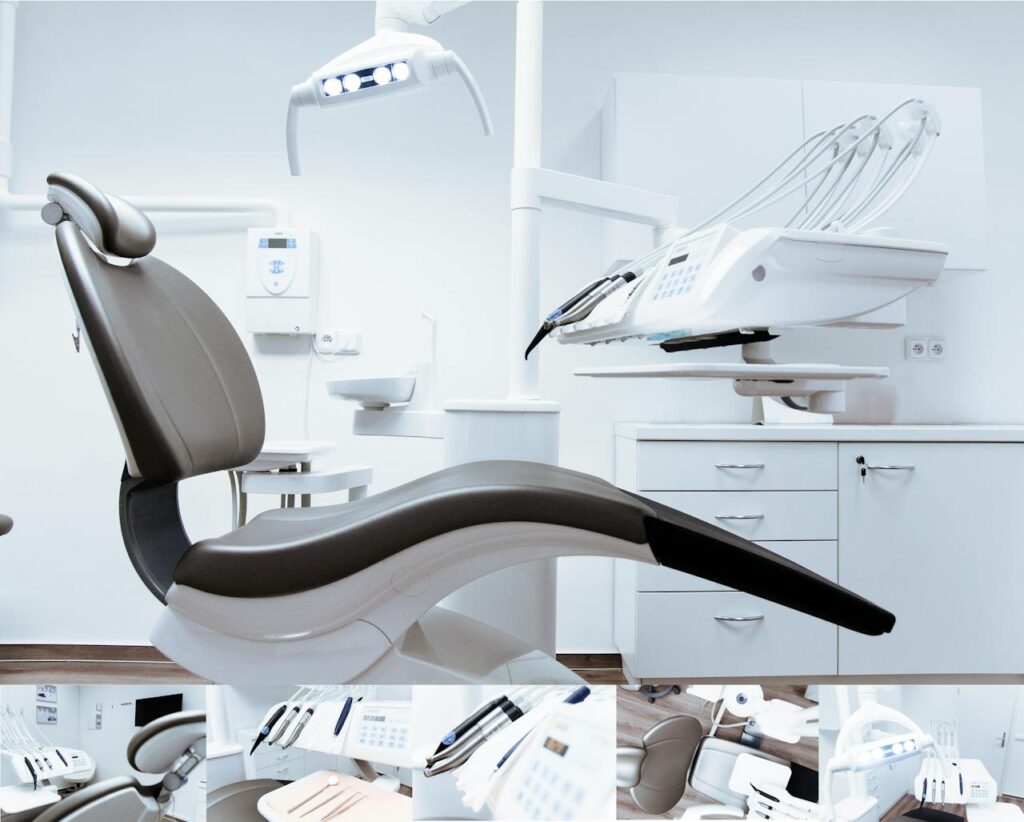
Telehealth services for teleconsultations and telemonitoring have increased since the pandemic [1], though teledentistry, in various forms, has been employed for at least the last 25 years [2]. Teledentistry may revolutionize oral healthcare by overcoming access barriers and enhancing patient education [1, 3]. Furthermore, research suggests that teledentistry is cost-effective at the individual, organizational, and community levels [3].
Teledentistry is often broadly defined, though a shared understanding is that physical distance between the dentist and the patient exists during a teledentistry encounter. This blog briefly looks at teledentistry’s wide scope of definitions and utility for teledentistry. A synchronous delivery method for teledentistry entails direct, real-time communication, like video calls, while an asynchronous delivery method enables communication without immediate responses and may include a multi-dental specialty disciplinary approach [1]. Remote patient monitoring involves collecting data from a distant location and transmitting it to a dental practitioner elsewhere. Live video is a real-time interaction between a patient and a healthcare provider, utilizing audio-visual communication for screening, diagnosis, treatment planning, or follow-up [3].
Postgraduate Degree in Community Oral Health
Like what you’re learning? Consider enrolling in the Herman Ostrow School of Dentistry of USC’s online, competency-based certificate or master’s program in Community Oral Health.
Teledentistry mirrors telemedicine models: remote monitoring, real-time, and store-and-forward [4,1]. Implementing a strategy and action plan for teledentistry in any organization involves using selected digital technologies aligned with the health priorities of individuals or oral health organizations [3]. Viewing teledentistry as a telehealth component may be transformative to improve its understanding and for integration of teledentistry [3]. A crucial point for the greater adoption or widespread application of teledentistry is a limited amount of data regarding its effectiveness (related to outcomes), frequently cited as a significant barrier to its implementation [3]. The cost-effectiveness and sustainability of teledentistry are, for the most part, unchallenged [1].

Figure 1. as illustrated in [ 3, Fig. 3]
Those in healthcare, particularly those caring for underserved populations, are familiar with social determinants of health and should consider using “digital determinants of health” to promote literacy and communication technologies and determine how to access multiple tools and software required for telecommunication [5].
Fig. 2 illustrates a differentiation and grouping of terms and shows that teledentistry is grouped with telemedicine within the services of the e-health bubble. The taxonomy [3] supports the clinical disciplines for teledentistry; telemedicine and teledentistry encompass subunits such as tele-triage, teleconsultation, teleassistance, telediagnosis, and telemonitoring [1].

Figure 2. as illustrated in [3, Fig. 2]
In addition to examining a consensus for a definition and utility of teledentistry, those in healthcare, particularly those caring for underserved populations, may include strategies to include ‘digital determinants of health”, which account for the literacy of communication technologies and telecommunication [6]. Continued efforts for standardizing digital health terminology may ensure that the assessment of the implementation and effectiveness of digital health interventions is conducted using a common language [3]. Teledentistry has a long history of utilizing telecommunications to triage dental emergencies and to plan immediate and future dental treatment, consultations, and monitoring, however, as technology continues to update, the distinctions in teledentistry can be instrumental in helping facilitate specialty consultation modalities of oral healthcare.
Teledentistry promises improved access, efficiency, and quality care, bridging geographical divides and offering cost-effective solutions [1]. Success requires addressing regulatory challenges, ensuring privacy, and promoting and providing digital literacy among patients and providers. Challenges include evaluating clinical effectiveness, establishing infrastructure, and maintaining patient-provider relationships amid digitalization [4,5,7].
Earn an Online Postgraduate Degree in Community Oral Health
Like what you’re learning? Consider enrolling in the Herman Ostrow School of Dentistry of USC’s online, competency-based certificate or master’s program in Community Oral Health.
References
- J. F. M. Scheerman et al., “A Systematic Umbrella Review of the Effects of Teledentistron Costs and Oral-Health Outcomes,” International journal of environmental research and public health, vol. 21, no. 4, pp. 407-, 2024, doi: 10.3390/ijerph21040407.
- Clark GT. Teledentistry: what is it now, and what will it be tomorrow? Journal of the California Dental Association. 2000;28(2):121-127. doi:10.1080/19424396.2000.12223058
- R. J. Mariño, S. E. Uribe, R. Chen, F. Schwendicke, N. Giraudeau, and J. F. M. Scheerman, “Terminology of e-Oral Health: Consensus Report of the IADR’s e-Oral Health Network Terminology Task Force,” BMC oral health, vol. 24, no. 1, pp. 280–280, 2024, doi: 10.1186/s12903-024-03929-z.
- N. D. Eze, C. Mateus, and T. C. O. Hashiguchi, “Telemedicine in the OECD: An umbrella review of clinical and cost-effectiveness, patient experience and implementation,” PloS one, vol. 15, no. 8, pp. e0237585–e0237585, 2020, doi: 10.1371/journal.pone.0237585
- P. K. Talla et al., “Teledentistry for improving access to, and quality of oral health care: A protocol for an overview of systematic reviews and meta-analyses,” PloS one, vol. 19, no. 1, pp. e0288677–e0288677, 2024, doi: 10.1371/journal.pone.0288677.
- Global strategy on digital health 2020-2025. Geneva: World Health Organization; 2021. License: CC BY-NC-SA 3.0 IGO. Network Terminology Task Force,” BMC oral health, vol. 24, no. 1, pp. 280–280, 2024, doi: 10.1186/s12903-024-03929-z.
- M. J. Deml, K. T. Jungo, M. Maessen, A. Martani, and A. Ulyte, “Megatrends in Healthcare: Review for the Swiss National Science Foundation’s National Research Programme 74 (NRP74) ‘Smarter Health Care,’” Public health reviews, vol. 43, pp. 1604434–1604434, 2022, doi: 10.3389/phrs.2022.1604434.
a


